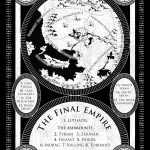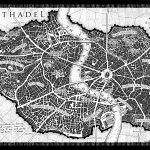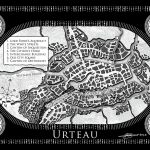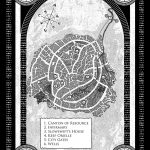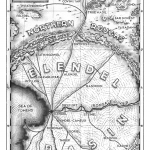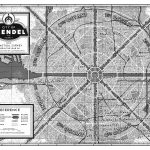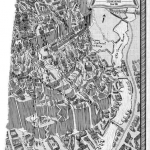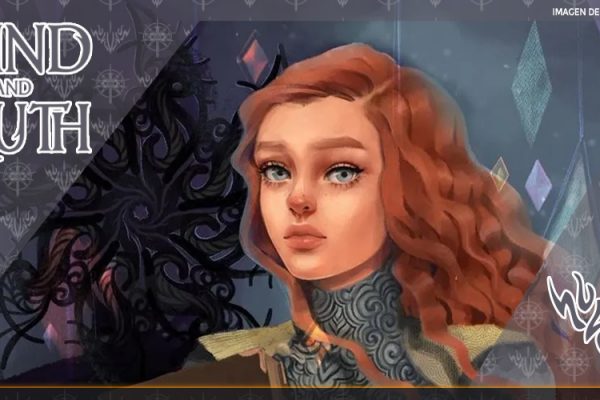
Entrevista con Isaac Stewart (3 de 3) – Cosmere: pasado, presente y futuro
Después de un pequeño parón estival, volvemos a la carga con la tercera y última parte de la entrevista con Isaac Stewart, en la que hablaremos un poco del pasado, el presente y lo que podría depararnos el futuro del Cosmere.
En las dos entregas anteriores, quisimos enfocarnos en su trabajo como director de arte y como cartógrafo de mundos fantásticos, y debido a la extensión de la entrevista, dejamos algunas preguntas en la recámara, estas ya más relacionadas con el Cosmere, pero Isaac tuvo la amabilidad de responderlas todas, que dejamos aquí para vuestro disfrute.
After a small summer break, we are back with the third and last part of the interview with Isaac Stewart, where we will be talking a bit about the past, present and future that Cosmere may bring us.
In the two previous parts we were focusing on his work as Art Director and Fantasy Cartographer, and due to the length of the interview we left some questions behind, this more Cosmere related, but Isaac was so kind as to answer them all, so here they are and we hope you will enjoy them.
Entrevista con Isaac Stewart (3 de 3): Cosmere – Pasado, presente y futuro
INTERVIEW WITH ISAAC STEWART (3 OF 3): COSMERE – PAST, PRESENT & FUTURE
C: Allá por 2006, Elantris era la primera novela publicada de Brandon. Él mismo fue el encargado de dibujar el mapa, con la ayuda del viejo MS Paint, y después Jeff Creer creó la antigua versión final. Estaba acostumbrada a ver mapas en los libros de fantasía, pero no me di cuenta de los acentos en cada capítulo. Al principio pensaba que tal vez serían simplemente una representación de los números. No fue hasta finalizar la historia que me di cuenta que era Aones, que son una parte importante del lenguaje.
En la vida real, su creación se inspiró en el sistema coreano de escritura. De alguna manera, pudimos empezar a percibir la admiración de Brandon por la cultura asiática, que queda completamente patente en El Alma del Emperador.
¿Cómo describirías la creación de un lenguaje?
IS: Estoy convencido de que quienes construyen lenguajes tendrán una mejor idea del proceso, y para mí, dar vida a algo que encaje en el Cosmere en diferente a crear algo para mí mismo. A principios de los noventa, inventé un programa sencillo que creaba palabras de manera aleatoria en base a la frecuencia de los vocales y las consonantes. Lo usaba para crear listas de cosas con las que después jugaría para dar nombre a mis propias creaciones. Ni siquiera recuerdo si conseguí que el programa funcionara adecuadamente. Pero desde entonces, he creado un lenguaje que quería que sonara un poco como el inglés, pero utilizando una estructura gramatical como la del tagalo. Así que tomé palabras del inglés, y cambié sus letras para que tuvieran mayos sonoridad. Después profundicé en el inglés antiguo y de la edad media, usé algunas reglas básicas para cambiar las palabras, e inventé más vocabulario. Fue un ejercicio divertido.
Sé de gente que ha creado lenguajes en torno a la semilla de una idea, como yo quería hacer con el idioma que mencioné arriba. El en tagalo existen muchas palabras para coco: el árbol, la fruta, sen función de lo madura que está la fruta, vino ce coco, etc. Así que, por ejemplo, podrías coger un elemento cultural como en este caso, y extrapolar. Repite la operación con otra cultura, y acércala a la primera. Muy pronto, los lenguajes empezarán a fundirse en uno, dando lugar a dialectos.
C: Pocas son las ocasiones en las que puedes ver las ediciones 10º aniversario de Tor y de Dragonsteel de un libro, en la que tienes la oportunidad de mirar atrás, revisar la historia y añadir esos detalles que te hubiera encantado tener incluidos, pero debido a que el autor se encontraba al principio de su carrera, no tuvo ocasión de solicitar. Así que imagino que una vez surgida la oportunidad, fuisteis capaces de reformar el mundo de forma más descriptiva, y así nacieron los nuevos mapas. ¿Recuerdas algo con especial cariño?
IS: Ya comenté bastante al respecto en otras preguntas, pero puedo añadir que realmente disfruté mapeando el mundo de Elantris. Fue una de las primeras veces desde mi adolescencia en las que me puse a crear mapas físicamente y no solo haciendo uso del ordenador. Esos son algunos de los únicos mapas originales que tengo, junto al de Arena Blanca, el mapa de alcatraz, y el mapa de Roshar. Creo que no son tan refinados como algunos de mis otros trabajos digitales, pero estoy bastante orgulloso de ellos. Ahora, debido a la falta de tiempo, cada vez hago menos mapas físicos.
C: Back then, in 2006, Elantris was Brandon’s first published novel. He was the one to draw the map with the aid of the old MS Paint, and then Jeff Creer created the old final version. I was used to see maps inside fantasy books, but then I didn’t notice the accents on each chapter. At the beginning I thought they just maybe were a representation of the numbers. It wasn’t until finishing the story when I realized they were Aons, which were an important part of the language.
In real life, its creation was inspired by the Korean writing system. Somehow here we could start to perceive Brandon’s admiration for the Asian culture, which was completely obvious on The Emperor’s Soul.
How would you describe the creation of a language?
IS: I’m sure serious creators of constructed languages have a better idea of this process, and for me it’s different coming up with something to fit into the Cosmere than it is for creating something on my own. In the early nineties, I created a simple program to randomly create words based on the frequency of vowels and consonants. I used it to create lists of things that I’d twist around for names in my own creations. I don’t ever remember if I got that program working very well. But since then, I’ve created a language that I wanted to sound kind of like English but using more of a Tagalog grammatical structure. So I took common words from English and changed the spelling to be more phonetical. Then I dug back into Old and Middle English, used some basic rules for changing the words around, and came up with more of the vocabulary. It was a fun exercise.
I’ve heard of people creating languages around just a seed of an idea, like what I wanted to do with my constructed language mentioned above. In Tagalog there are a bunch of words for coconut: the tree, the fruit, how ripe or unripe the fruit is, coconut wine, etc. So, for example, you could take a cultural element like that and extrapolate out. Pretty soon you have the beginnings of a language. Do that again for another culture and have them meet the first. Pretty soon, the languages start melding into one and creating dialects and so forth.
C: Few are the times you get to see both Tor and Dragonsteel 10th Anniversary Editions, were you have the chance to go back, review the story and add those details you maybe would love to see included, but since the author was on his earlier career had little chance to ask for. So I guess that given the opportunity, you were able to reshape the world on a more descriptive way, and so the new maps were born. Do you have any beloved memory in particular?
IS: I’ve covered a lot of this up above, but I can add that I really enjoyed mapping the world of Elantris. It was one of the first times since I was a teenager that I toyed with creating the maps physically rather than on the computer. Those are some of the only original physical maps that I have, along with the map for White Sand, the Alcatraz map, and the map of Roshar. I don’t feel like they’re as refined as some of the digital stuff I’ve made, but I’m still quite proud of them. Anymore, due to time constraints, I’m doing fewer and fewer maps physically.
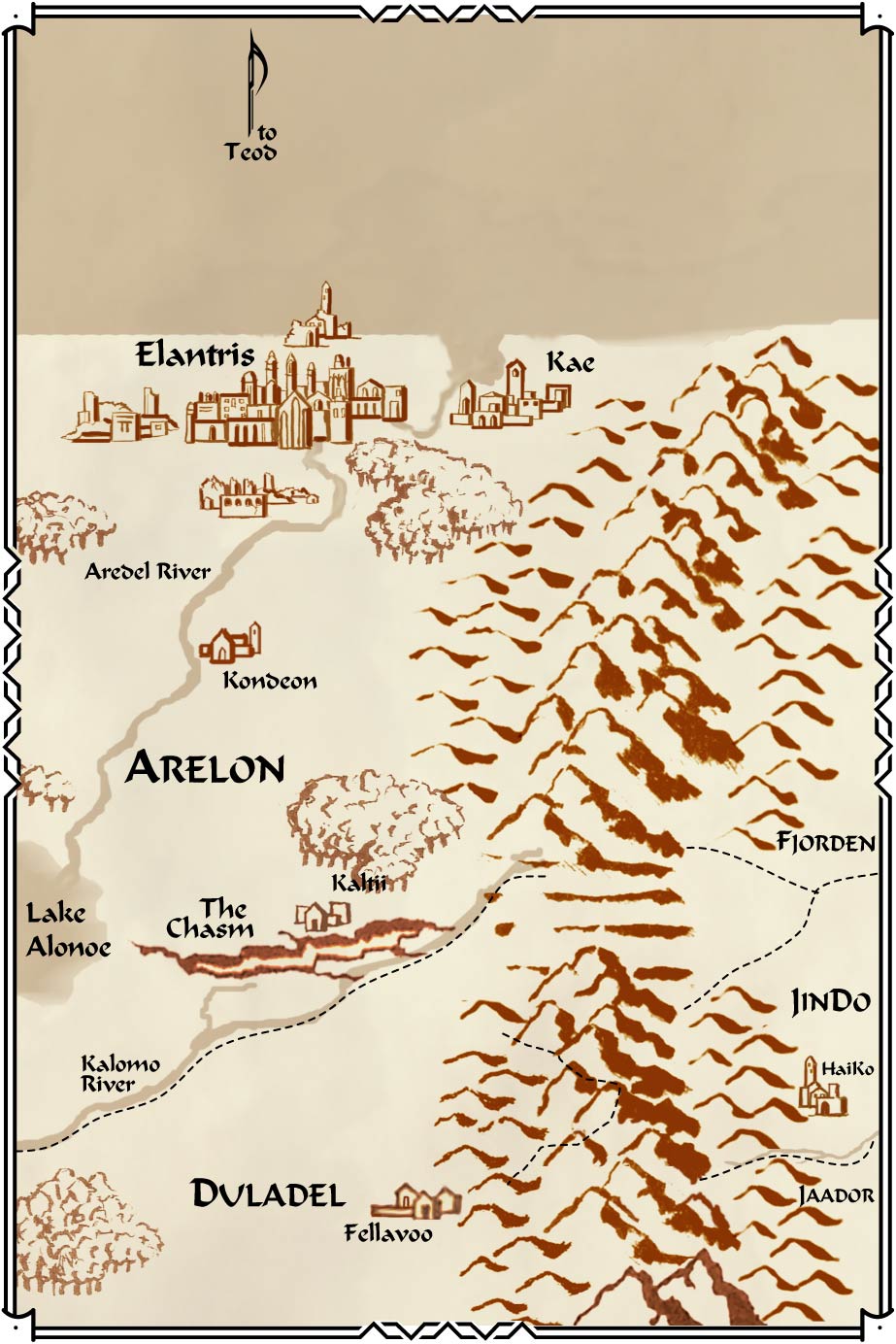
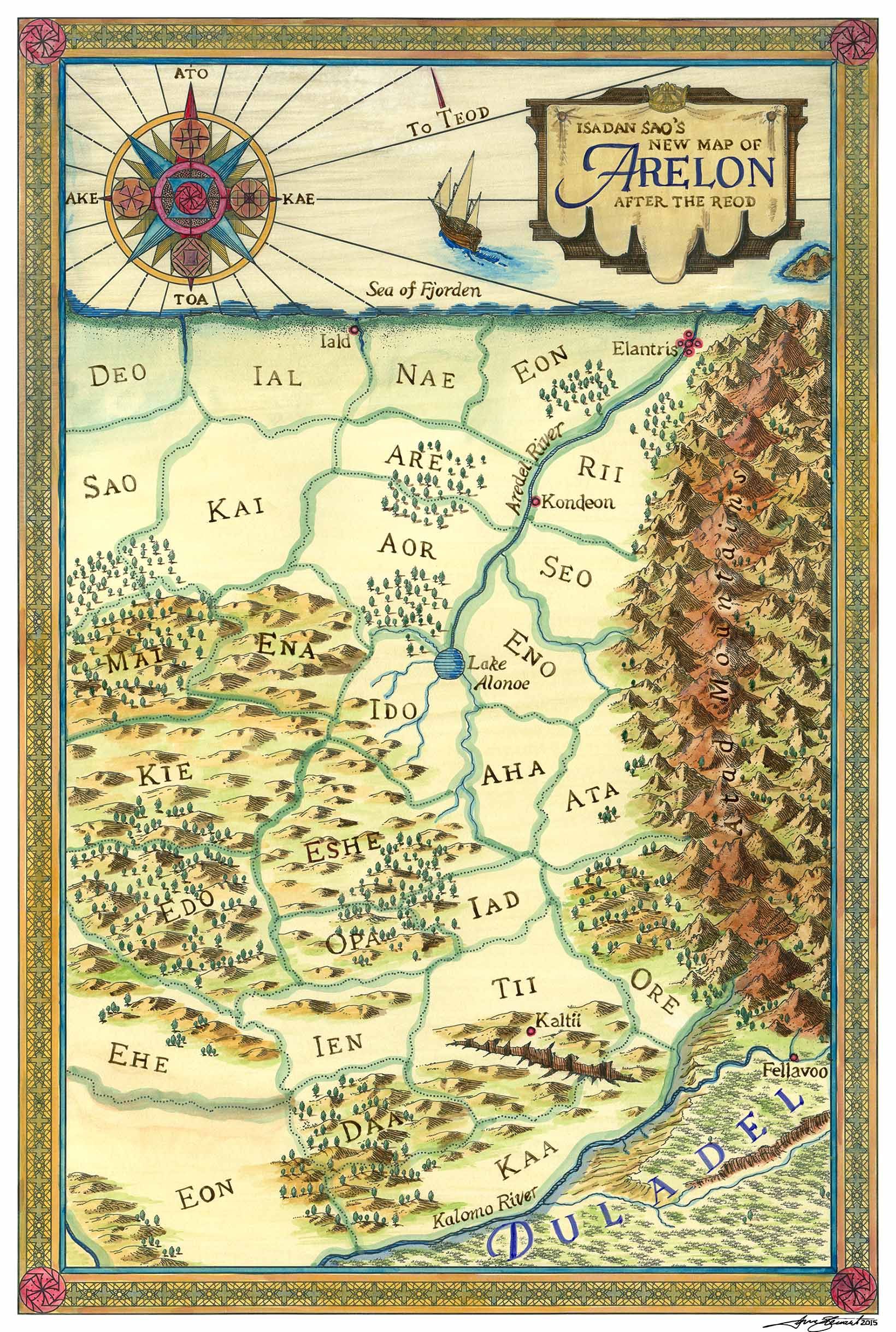
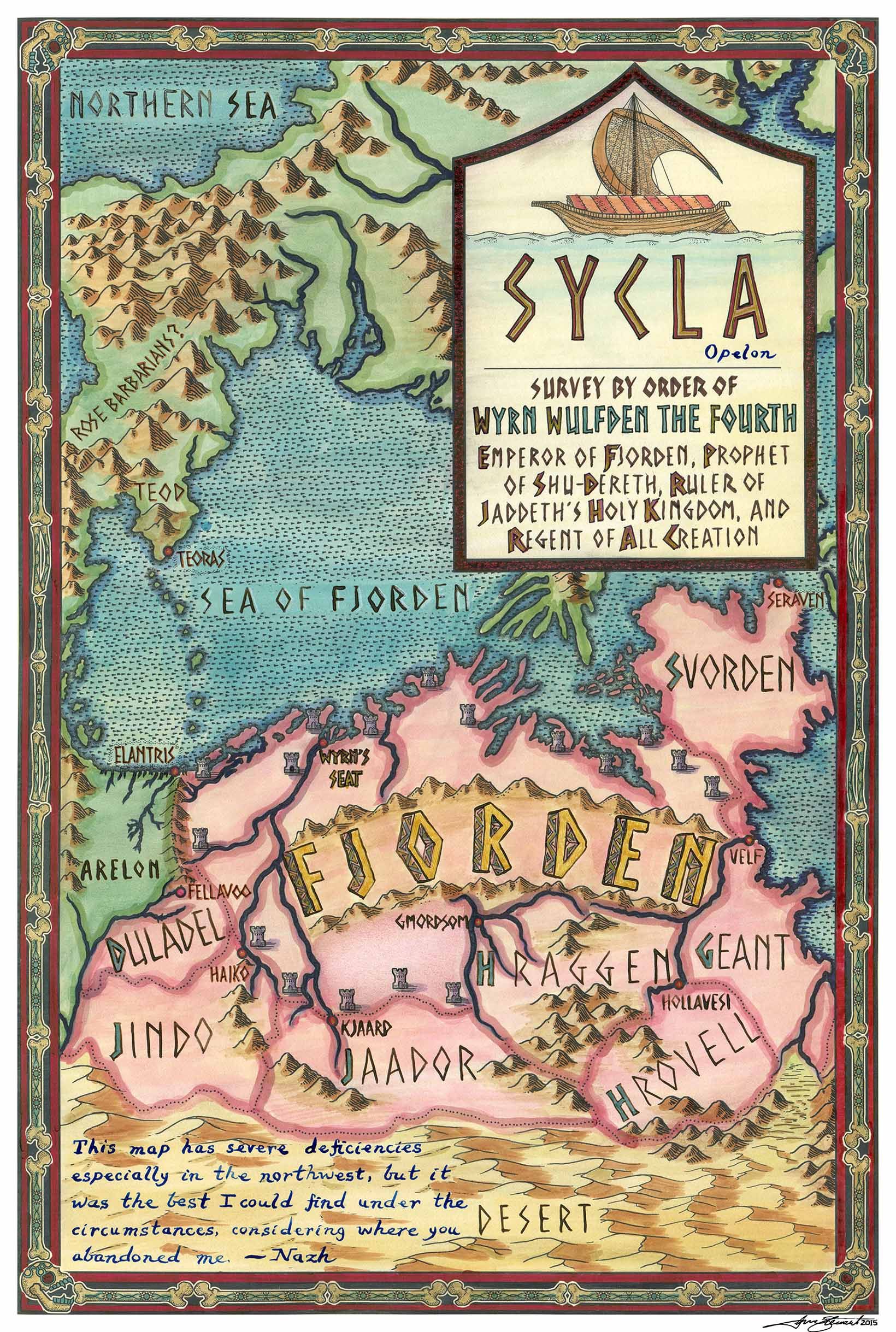
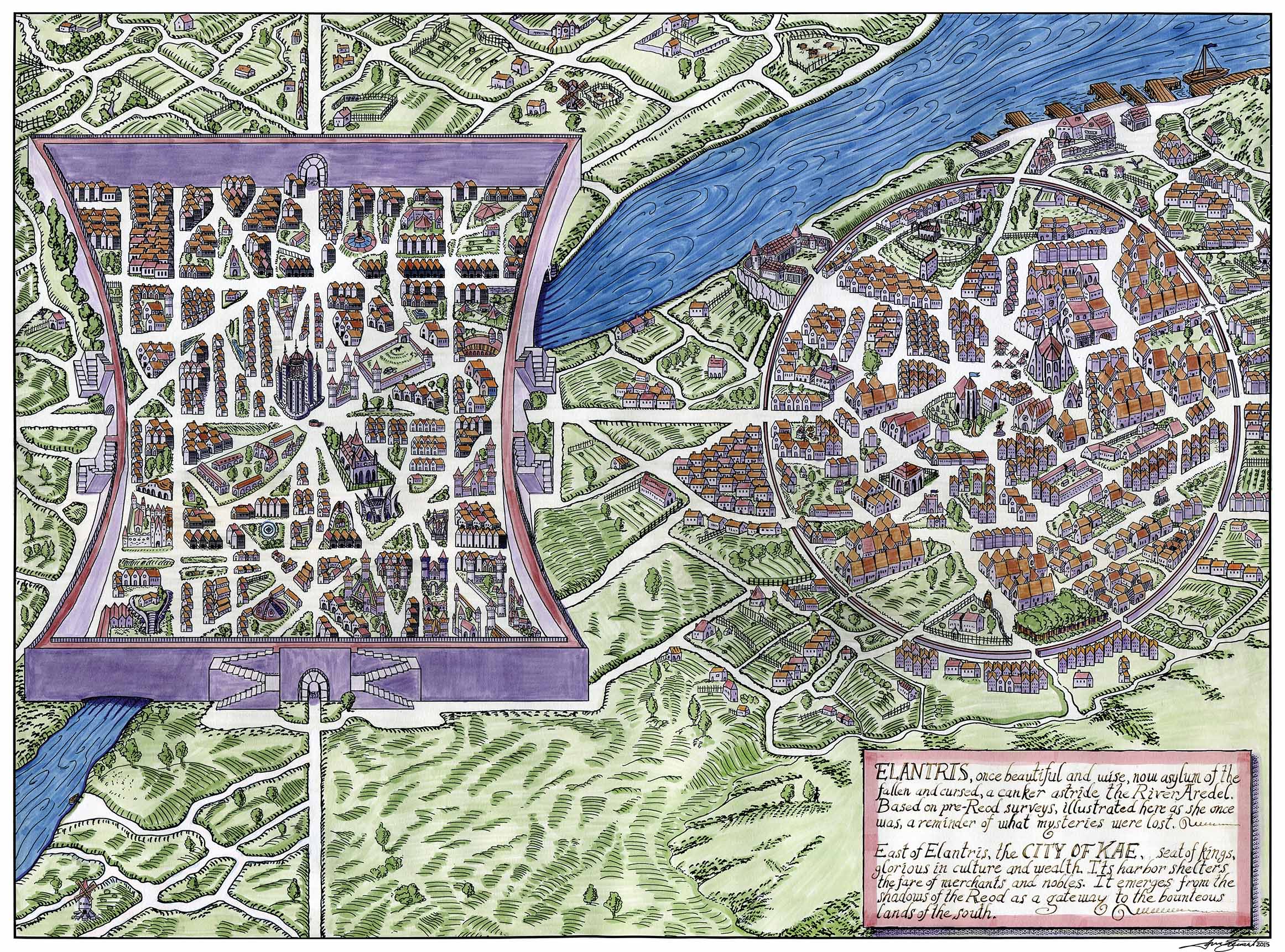
C: Un año más tarde, llegó El Imperio Final, con una impresionante portada, mapas más detallados y algunos símbolos extraños correteando por las páginas. Tal vez aún no éramos conscientes de ello, pero ese esfuerzo por crear no solo una buena historia, pero un alfabeto para cada mundo, se convertiría en una de las marcas personales de Brandon. Así que te encontrabas un poco perdido, pero de alguna manera nos estaba introduciendo en su mundo paso a paso, dejando pistas como si se tratara de un juego, para que nosotros descubriéramos qué es lo que estaba pasando. Por ejemplo, cómo se añadían nuevos metales a las tablas.
Creo que, llegados a este punto, empezaste a tener cada vez más y más trabajo. Tuviste que inventar el alfabeto de acero, y la tabla de metales alománticos. ¿Qué podrías contarnos sobre la creación de la tabla y del alfabeto? ¿Tienes algún boceto previo que puedas compartir?
IS: Hice muchísimas notas mientras trabajaba en los mapas, los símbolos y la tabla alomántica. Brandon era tan organizado con el desarrollo de su sistema mágico que la tabla prácticamente nació por sí misma dando lugar a los patrones para los metales y las aleaciones, cuáles empujan o atraen, y cuáles son internos o externos.
Los símbolos eran más complicados, y tengo páginas con ideas que jamás se utilizaron. El avance se produjo mientras buscaba imágenes de referencia y descubrí un montón de clavos doblados y oxidados. Uno de ellos parecía un símbolo, así que lo aboceté y empecé a construir ideas a partir del boceto original. Rápidamente tuve una lista de símbolos para los diferentes metales, pero no sabía cuántos de ellos iban a ser relevantes más allá de los ya mencionados en los libros, así que cree los suficientes como para tener un alfabeto, les asigné parejas de letras (algo que Peter me ayudó a pulir más tarde) para cada metal y su aleación. Pensamos que también deberían representar números, ya que los estábamos poniendo al principio de cada capítulo. ¿O tal vez primero surgieron los números y después los utilizamos como letras? Hace tanto de aquello que no tengo muy claros los detalles :)
C: A year later, The Final Empire arrived, with astounding cover art, more detailed maps and some strange symbols running through the pages. Maybe we were not yet aware of it, but that effort to create not just a good story but a proper alphabet for each world was to become one of Brandon’s trademarks. So at the beginning we might feel a bit lost, but somehow he was introducing us into his world step by step, leaving clues as if on a game, for us to guess what was going on. For example, how new metals were added to the tables.
I think at this point you started to have more and more work. You had to come up with the Steel Alphabet and the Allomantic Metals Table. What can you tell us about the creation of the alphabet and the table? Do you have any previous sketches you can share?
IS: I made a lot of notes while working on the maps, symbols, and Allomantic Table for Mistborn. Brandon was so organized in his development of the magic system that the table practically created itself in the patterns for the metals and alloys, which ones push and pull, and which are internal or external.
The symbols are more difficult, and I have pages of ideas that were never used. The breakthrough came when I was looking up reference images and discovered a picture of a pile of bent up, rusty nails. One of them looked like a symbol, so I sketched it down and started building ideas off that initial sketch. Pretty soon I had a list of symbols for the different metals, but I didn’t know how many would be important beyond those mentioned in the books, so I created enough for an alphabet, assigned letter pairs–which Peter later helped me refine–to each metal and its alloy. We figured they must also represent numbers since we were putting them on the chapter headings. Or maybe the numbers came first and then we used them as letters? It’s been long enough that the details aren’t as clear to me :)
LA ESCRITURA EN ROSHAR / ROSHARAN SCRIPTS


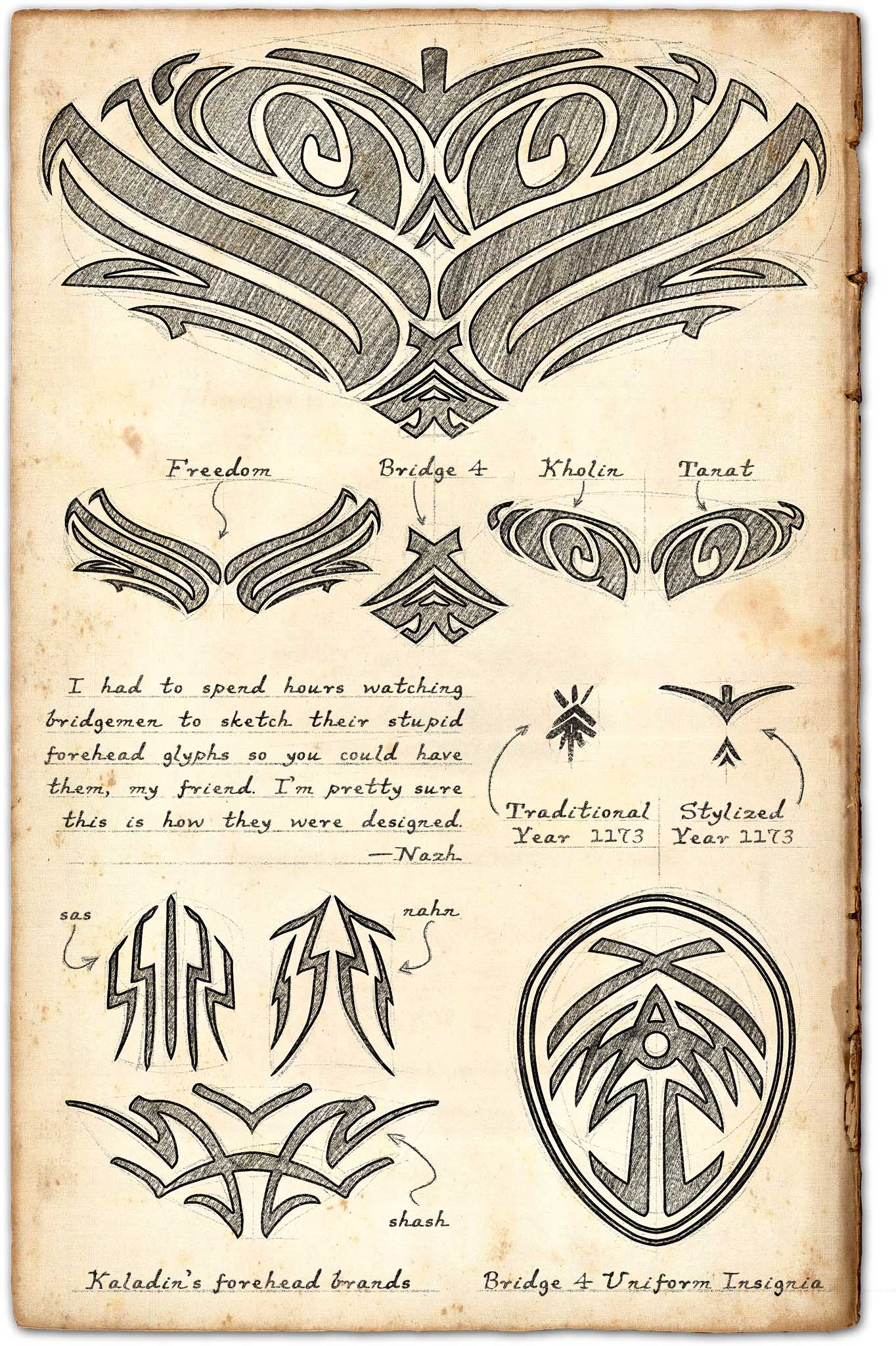
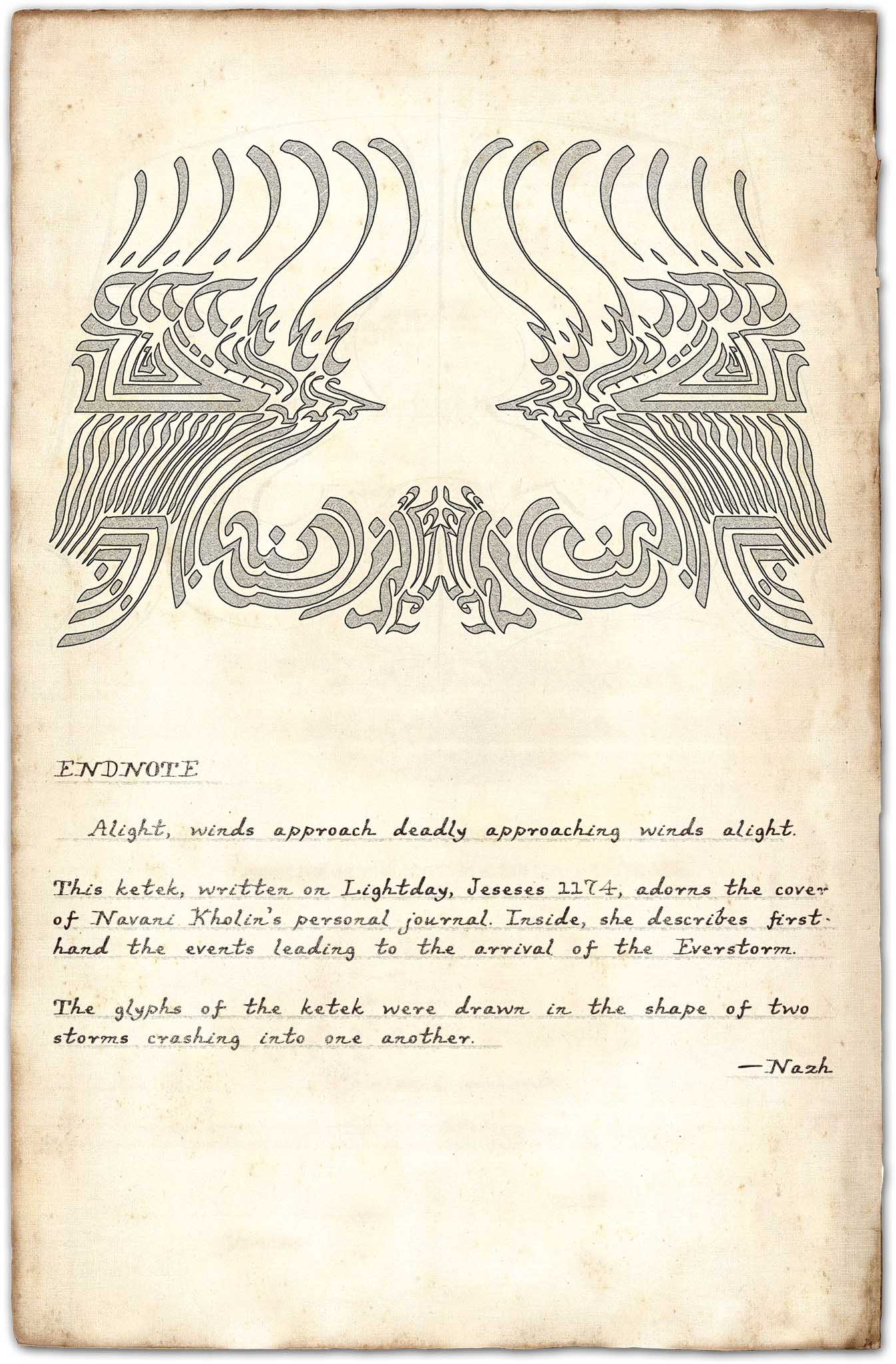
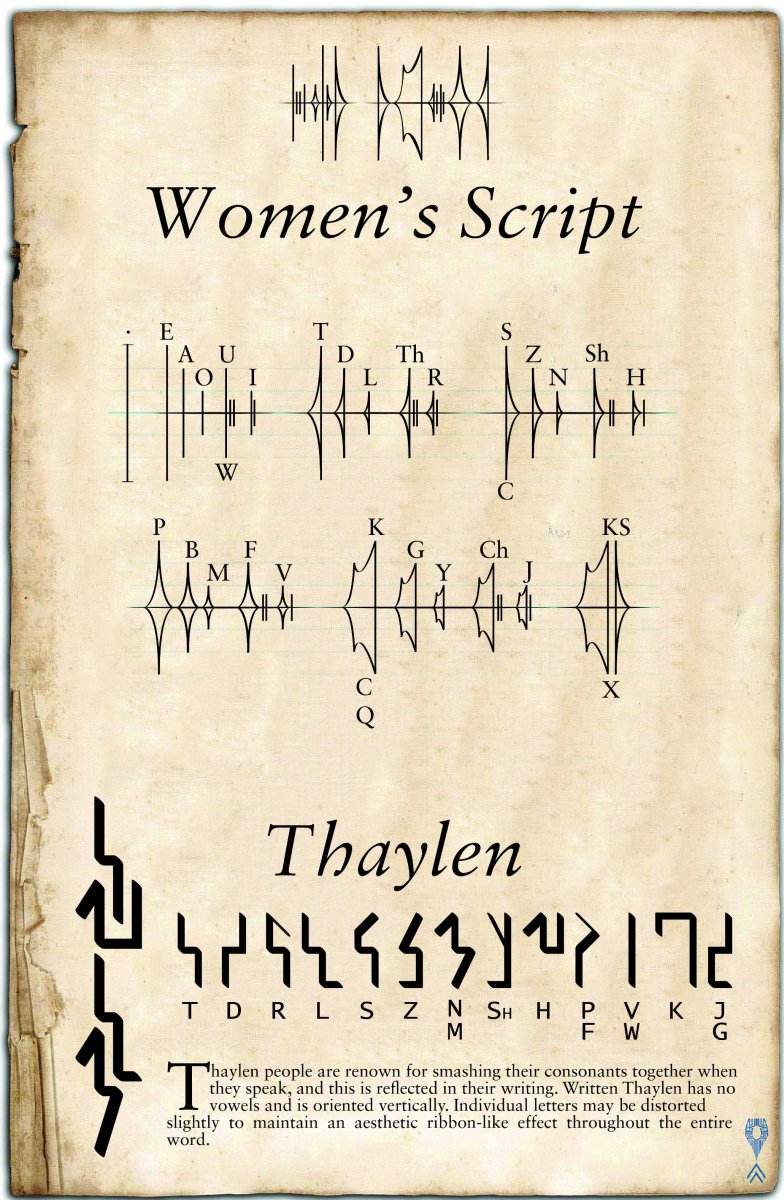
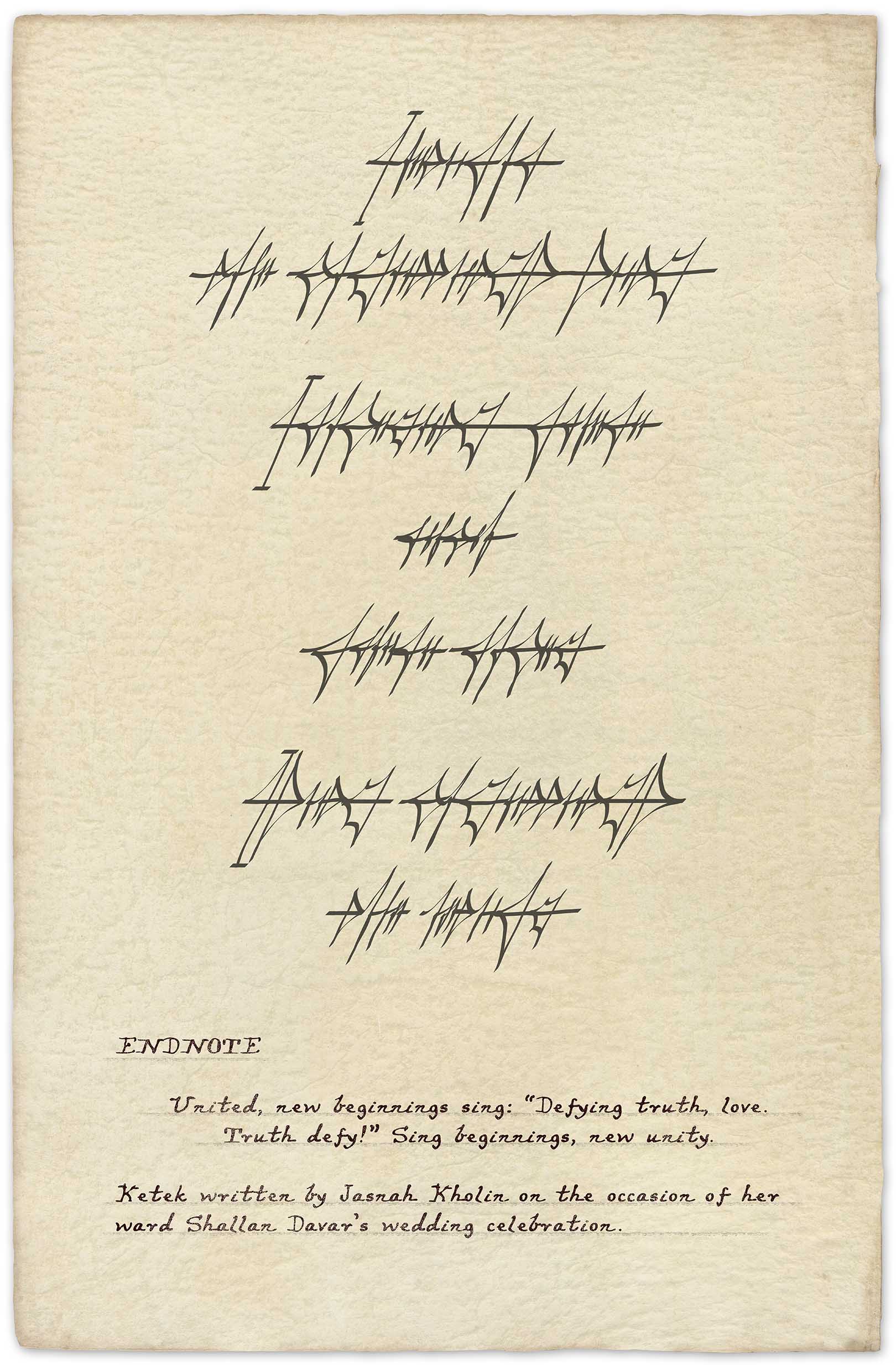
C: Un año más tarde, llegó El Imperio Final, con una impresionante portada, mapas más detallados y algunos símbolos extraños correteando por las páginas. Tal vez aún no éramos conscientes de ello, pero ese esfuerzo por crear no solo una buena historia, pero un alfabeto para cada mundo, se convertiría en una de las marcas personales de Brandon. Así que te encontrabas un poco perdido, pero de alguna manera nos estaba introduciendo en su mundo paso a paso, dejando pistas como si se tratara de un juego, para que nosotros descubriéramos qué es lo que estaba pasando. Por ejemplo, cómo se añadían nuevos metales a las tablas.
Creo que, llegados a este punto, empezaste a tener cada vez más y más trabajo. Tuviste que inventar el alfabeto de acero, y la tabla de metales alománticos. ¿Qué podrías contarnos sobre la creación de la tabla y del alfabeto? ¿Tienes algún boceto previo que puedas compartir?
IS: Hice muchísimas notas mientras trabajaba en los mapas, los símbolos y la tabla alomántica. Brandon era tan organizado con el desarrollo de su sistema mágico que la tabla prácticamente nació por sí misma dando lugar a los patrones para los metales y las aleaciones, cuáles empujan o atraen, y cuáles son internos o externos.
Los símbolos eran más complicados, y tengo páginas con ideas que jamás se utilizaron. El avance se produjo mientras buscaba imágenes de referencia y descubrí un montón de clavos doblados y oxidados. Uno de ellos parecía un símbolo, así que lo aboceté y empecé a construir ideas a partir del boceto original. Rápidamente tuve una lista de símbolos para los diferentes metales, pero no sabía cuántos de ellos iban a ser relevantes más allá de los ya mencionados en los libros, así que cree los suficientes como para tener un alfabeto, les asigné parejas de letras (algo que Peter me ayudó a pulir más tarde) para cada metal y su aleación. Pensamos que también deberían representar números, ya que los estábamos poniendo al principio de cada capítulo. ¿O tal vez primero surgieron los números y después los utilizamos como letras? Hace tanto de aquello que no tengo muy claros los detalles :)
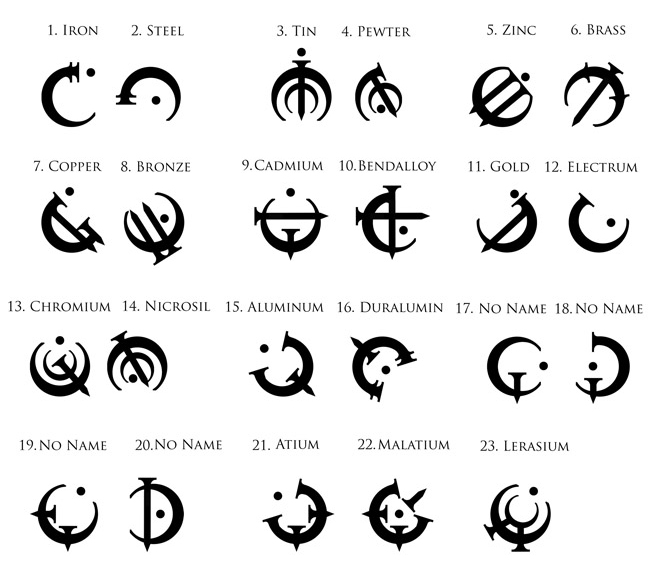
C: Hay libros y sagas que representan un gran esfuerzo creativo. Cada mundo tiene peculiaridades muy interesantes. La primera vez que aterrizamos en Scadrial, sabíamos que se trataba de una trilogía, pero en 2011 Brandon nos sorprendió con una historia corta, que se transformó en un libro, que se transformó en el puente entre las viejas novelas del Imperio Final y una nueva trilogía, ambientada 300 años más tarde, Lo que hoy conocemos como Era 2.
Así que es asombroso ver un mundo evolucionar y desarrollarse. Aquí los mapas son muy importantes porque te ayudan a entender los cambios, descubrir nuevas localizaciones anteriormente desconocidas, y descubrir el propio mundo; y tal vez, con el tiempo, otros planetas dentro de su sistema solar.
¿Qué dirías que es lo más emocionante de trabajar con un planeta vivo, en el que la sociedad y la tecnología cambian? Puede que incluso cambie el alfabeto. Espero que veamos mapas detallados y paisajes de las ciudades de Era 3.
IS: Acabas de mencionar el punto más emocionante. Llegar a ver cómo el mundo evoluciona a lo largo del tiempo. Tengo muchas ganas de tomar mapas de la Era 2 y extrapolarlos a la Era 3, si la historia así lo requiere.
C: A year later, The Final Empire arrived, with astounding cover art, more detailed maps and some strange symbols running through the pages. Maybe we were not yet aware of it, but that effort to create not just a good story but a proper alphabet for each world was to become one of Brandon’s trademarks. So at the beginning we might feel a bit lost, but somehow he was introducing us into his world step by step, leaving clues as if on a game, for us to guess what was going on. For example, how new metals were added to the tables.
I think at this point you started to have more and more work. You had to come up with the Steel Alphabet and the Allomantic Metals Table. What can you tell us about the creation of the alphabet and the table? Do you have any previous sketches you can share?
IS: I made a lot of notes while working on the maps, symbols, and Allomantic Table for Mistborn. Brandon was so organized in his development of the magic system that the table practically created itself in the patterns for the metals and alloys, which ones push and pull, and which are internal or external.
The symbols are more difficult, and I have pages of ideas that were never used. The breakthrough came when I was looking up reference images and discovered a picture of a pile of bent up, rusty nails. One of them looked like a symbol, so I sketched it down and started building ideas off that initial sketch. Pretty soon I had a list of symbols for the different metals, but I didn’t know how many would be important beyond those mentioned in the books, so I created enough for an alphabet, assigned letter pairs–which Peter later helped me refine–to each metal and its alloy. We figured they must also represent numbers since we were putting them on the chapter headings. Or maybe the numbers came first and then we used them as letters? It’s been long enough that the details aren’t as clear to me :)

C: There are books and series that represent a huge creative effort. Each world has very interesting peculiarities. When we first landed in Scadrial, we knew it was going to be a trilogy, but in 2011 Brandon surprised us with a short story which became a book which became the bridge between the old Final Empire novels and a new trilogy, settled 300 years later. What we today call Era 2.
So it’s awesome to see a world evolving and developing. Here maps are very important so they help you understand the changes, discover locations previously unknown, and discover the world itself; and maybe given the time, other planets within their solar system.
What would you say it is the most exciting thing about work with a living planet, where its society and technology changes? Maybe even the alphabet might change. I hope we get to see detailed maps and landscapes for Era 3 cities.
IS: You mention the most exciting thing right there. Getting to see how the world develops over time. I’m quite excited to take some of the maps from Era 2 and extrapolate them into Era 3, if the story calls for it.
Mapas de nacidos de la bruma / mistborn maps
C: Y hablando de Nacidos de la Bruma, este mundo posee una cosa particularmente interesante de la que me gustaría hablar, que es su expansión gracias a los juegos de rol publicados por Crafty Games. Como lectores, estamos muy orgullosos por tener la oportunidad de ser no meros espectadores, si no parte de la historia en sí misma. Ser capaces de caminar por Scadrial, y vivir nuestras propias aventuras. Ben McSweeney hizo un trabajo estupendo, como siempre. ¿Estuviste involucrado en el proyecto? ¿Cómo fue expandir el mundo, e intentar mantener la coherencia al mismo tiempo? ¿Qué piensas de este proyecto?
IS: He disfrutado del Mistborn Adventure Game de Crafty. ¡Las ilustraciones de Ben son fantásticas! No estuve involucrado directamente más allá de algunas licencias de Dragonsteel para el uso de arte en los libros, pero creo que Crafty hace un buen trabajo interpretando, expandiendo y extrapolando las sagas para su uso como ambientación de RPG.
C: ¿Veremos un juego de rol de El Archivo de las Tormentas, cuando finalice la primera mitad de la saga? Sería brutal. El mundo aporta todos los detalles necesarios que un buen juego de rol debe tener.
IS: Parece como si me preguntaras si puedo predecir el futuro. Es posible, pero realmente no lo sé :)
C: A pesar de que tenemos mucha información sobre Roshar y sobre Scadrial, hay otros mundos que aún resultan un tanto misteriosos, quizás porque todavía hay historias pendientes de ser desarrolladas, o quizás porque son planetas menores, pero… ¿Veremos nuevos mapamundis para Scadrial, Sel, y los demás mundos? Ya que sabemos que cada libro del Cosmere está enmarcado en un sistema planetario, nos encantaría echar un vistazo a los planetas donde tienen lugar las historias. Taldain debe ser realmente interesante.
IS: Seguiremos creando mapas de más localizaciones del Cosmere conforme vaya surgiendo la necesidad.
C: Y entonces llegamos a la ópera magna: El Archivo de las Tormentas. Aquí podemos ver cómo las lecciones aprendidas durante los previos años se combinan hermosamente para crear una de las más espléndidas piezas de la literatura fantástica. Todavía recuerdo la primera vez que vi El Camino de los Reyes. Lo primero fue reconocer los pinceles de Michael, y eso ya fue suficiente justificación para mí para hacerme con el libro, sin importar nada más. Entonces, lo abrí para quedar maravillosamente sorprendida con las guardas a todo color. Quedé estupefacta al contemplar una especie de diagrama (más tarde aprenderíamos que esas eran las potencias, y los símbolos de los Radiantes) y el mapa de Roshar… Más un mapa adicional y otro diagrama en la parte posterior del libro. Yo me sentía como… ¿Qué es esto? Miré el tamaño del libro, y empecé a hojear las páginas, sintiéndome en necesidad de llevarme el libro a casa, cada detalle se había cuidado maravillosamente. El efecto papiro de las páginas de bocetos… ¡¡¡Páginas de bocetos!!! Incluso tenía miedo de preguntar por el precio pero… Quería el libro a toda costa… Y entonces, el precio era increíblemente ajustado. Era uno de los libros más bellos que había visto jamás, y me lo podía permitir. Me sentía realmente feliz…
Como es eso de que un día llegáis y decidís, vale, vamos a crear este libro. Y va a ser espléndido. Me encantaría si pudieras explicar un poco de la historia.
IS: Creo que el todo el arte incluido en esos libros se fue desarrollando durante el transcurso de la creación del primer libro, pero desde el principio Brandon tenía una visión de cómo podrían ser los libros de El Archivo de las Tormentas, y quería que el arte fuera una parte esencial. Contrató a Ben McSweeney para crear los bocetos que utilizaría para introducir la saga a Tor, y creo que Brandon de alguna manera siempre se imaginó a Shallan como una artista y quería incluir sus bocetos en el libro. Así que, en realidad, Brandon es el genio tras la visión de crear libros de esa belleza. ¡Me alegro de que Tor se embarcara en un proyecto tan ambicioso!
C: Es aquí donde te das cuenta de la grandeza del Cosmere. Todas las razas, e incluso diferentes sociedades comprendidas por las mismas razas. Los diferentes idiomas. Personas que se comunican a través de canciones, sociedades en las que tan solo las mujeres tienen permitido escribir y leer (y la interesante escritura que asemeja ondas), los glifos… Tanto detalle. ¿Cómo describirías la experiencia de dar forma a todas estas ideas?
IS: Me siento como si diera forma a menos cosas de las que implican tu pregunta. Brandon es el arquitecto y director de todas esas ideas, y es cuando describe algo que le gustaría ver convertido en ilustraciones, que yo (u otro artista) entra en modo conceptual y da vida a una docena de ideas (a veces son muchísimas más) para presentárselas a Brandon. Él hace sus comentarios, y nos trabajamos en la siguiente ronda. A veces nos acercamos a lo que él tiene en mente, y a veces el hecho de conceptualizar diferentes ideas le ayuda a aclarar y dar forma a su visión.
En conjunto, ayudar a aclarar, conceptualizar, y visualizar lo que él imagina es un proceso muy gratificante. A veces toma vida propia, como fue el caso de la creación de los glifos, en el que el proceso cobró vida y se concretó con el tiempo, pero en el que tuve un poco más de libertad para mis propias creaciones, siempre bajo la dirección de Brandon, por supuesto. Y también querría señalar que, en la creación de lenguajes y símbolos, Peter (quien posee un grado en lingüística) es siempre de gran ayuda.
C: ¿Algún plan para crear un libro ilustrado complementario, como El Mundo de Robert Jordan para La Rueda del Tiempo? Una recopilación de mapas, la flora, la fauna, las razas, las diferentes culturas y mitología, y bueno… Todo, a todo color. ¿Hay alguna posibilidad?
IS: El equipo ha discutido este tema desde empezara a trabajar en El Camino de los Reyes, y es algo que ha resurgido con cada siguiente libro de El Archivo de las Tormentas. Si decidimos hacer algo así, aún estamos a muchos años de distancia.
C: El Cosmere se merece un juego sandbox, para viajar a través del universo. De alguna manera, cuando pienso en ello, me imagino un universo digital como el Oasis de Ernest Cline. Espero que lleguemos a ver algo así alguna vez. ¿Crees que lo veremos?
IS: ¡Eso sería totalmente genial! Depende por completo de como siga desarrollándose la tecnología, junto al típico golpe de suerte. Hay muchos juegos franquiciados exitosos ahí fuera, todos compitiendo por hacerse un hueco, y los recursos son limitados. Si se diera la combinación correcta de tecnología, recursos, y jugadores clave para que salga bien un Oasis del Cosmere, ¡qué maravilla sería!
C: And talking about Mistborn, this world has a particularly interesting thing to talk about, which is its expansion thanks to the roleplaying games published by Crafty Games. As readers we are pretty fond to have the chance not just to be expectators, but to be a part of the story itself. Since Brandon To be able to walk through Scadrial, and living our own adventures. Ben McSweeney did a great job as always. Were you involved in the project? How was it to expand the world, and trying to keep coherence at the same time? What are your thoughts on this project?
IS: I have enjoyed the Mistborn Adventure Game from Crafty. Ben’s illustrations are fantastic! I wasn’t directly involved other than in licensing some of Dragonsteel’s art for use in the books, but I think Crafty does a good job interpreting, expanding, and extrapolating the series for use in an RPG setting.
C: Will we be seeing a Stormlight Archive roleplaying game after finishing the first half of the series? It would be awesome. The world provides all the details a good roleplaying game needs to have.
IS: This sounds like asking me to predict the future. It’s possible, but I really don’t know. :)
C: Even though we have plenty information on Roshar and Scadrial, there are other worlds which are still kind of mysterious, because maybe there are still stories to be developed, or because they are minor planets, But… Will we be seeing new world maps for Scadrial, Sel, and the other worlds? Since we now know that each Cosmere books is settled within a planetary system, we would really love to take a full look to the planets where the story takes places. Taldain must be really interesting.
IS: We will continue mapping more places in the Cosmere as the need arises.
C: And then we reach the Magnum Opus: The Stormlight Archive. Here we can see how all the lessons learned during all the previous years merge beautifully to create one of the most splendid fantasy pieces ever. I still remember the first time I saw The Way of Kings. First of all I recognized Michael’s brushes, and that was enough justification for me to buy this new book no matter what. Then, I opened it to be wonderfully surprised with the full-color end papers. I was astonished at the sight of some kind of diagram (later we would learn those were the surges and the Radiants’ symbols) and Roshar’s map… Plus another map on the back and another diagram. I was like… What is that? I looked at the size of the book, and started to turn some pages and I felt I needed that book at home, every detail was so lovely been taken care of. The papyrus effect for the sketches pages… Sketches pages!!! I was even scared to ask for the prize but… I wanted the book so badly… And then, the price was surprisingly fair. It was one of the most beautiful books I’ve ever seen, and I could afford it. I was so really happy…
How come did you guys wake up one day, and decided, OK, I’m going to create this book. And it’s going to be gorgeous. I would love you if you could explain a bit of the story.
IS: I think the scope of art in these books developed over the course of creating the first book, but from the beginning Brandon had a vision for what the Stormlight books could be and wanted art to be an integral part of it. He employed Ben McSweeney to create sketches that he used to pitch the series to Tor, and I think Brandon kind of always envisioned Shallan as an artist and wanted to include her sketches in the books. So really, Brandon is the genius behind the vision of creating books this beautiful. I’m glad Tor was on board for such an ambitious project!
C: Here you can fully realize the glory of the Cosmere. All the different races and even the different societies within same races. The different languages. People who communicate through songs, societies where just women are allowed to write and read (and the interesting written language soundwaves-like), the glyphs… Such detail. How would you describe the experience of shaping all those ideas?
IS: I feel like I shape far less than your question implies. Brandon is the architect and director of all these ideas, and when he describes something he wants elaborated using pictures, that’s when I–or another artist–get to go into concept mode and create a half dozen ideas–sometimes way more–to present to Brandon. He gives feedback, and then we go another round of it. Sometimes we wind up close to what he envisioned, and sometimes the concepting of different ideas helps shape and clarify his vision.
Overall, getting to help clarify, concept, and visualize what he imagines is a very fulfilling process. Sometimes it takes a life of its own, like the creation of the glyphs, where the process solidifies and becomes more concrete over time but where I have a bit more freedom to do my own thing, always under Brandon’s direction, of course. And I also must mention that in the creation of languages and symbols, Peter–who has a degree in linguistics–is always very helpful.
C: Any plans to create a fully illustrated companion? Like The World of Robert Jordan’s The Wheel of Time. A compilation of the maps, the flora, the fauna, the races, the different cultures, and mythology, and well… Everything, full-color. Is there any chance?
IS: The Team has discussed this ever since working on The Way of Kings, and it’s come up with each subsequent book in The Stormlight Archive. If we decide to put together something like that, it’s still years away.
C: The Cosmere totally deserves a complete sandbox game, to travel across universes. Somehow, when I think of it, I kind of imagine a digital universe like Ernest Cline’s Oasis. I hope we will see something like that someday. Do you think we will?
IS: That would be incredibly cool! It really depends on how technology continues to develop along with the usual luck of the draw. There are so many successful IPs out there, each one vying for market space, and there are limited resources. If the right combination of technology, resources, and key players eventually pans out into making a Cosmere Oasis, then what an amazing thing that will be!
Tamara Eléa Tonetti Buono
Apasionada de los comics, amante de los libros de fantasía y ciencia ficción. En sus ratos libres ve series, juega a juegos de mesa, al LoL o algún que otro MMO. Incansable planificadora, editora, traductora, y redactora.
Post a Comment
Lo siento, debes estar conectado para publicar un comentario.
